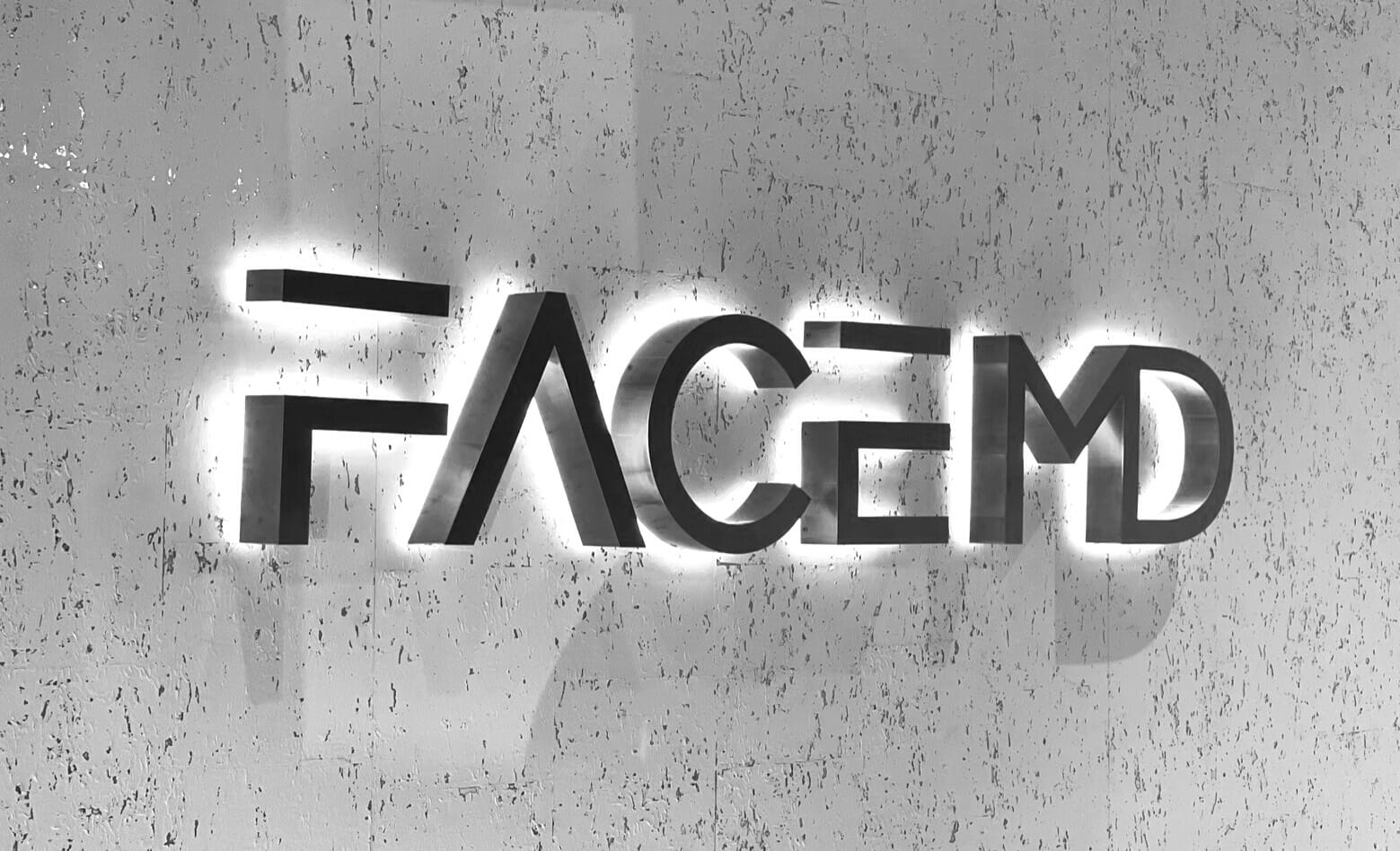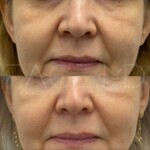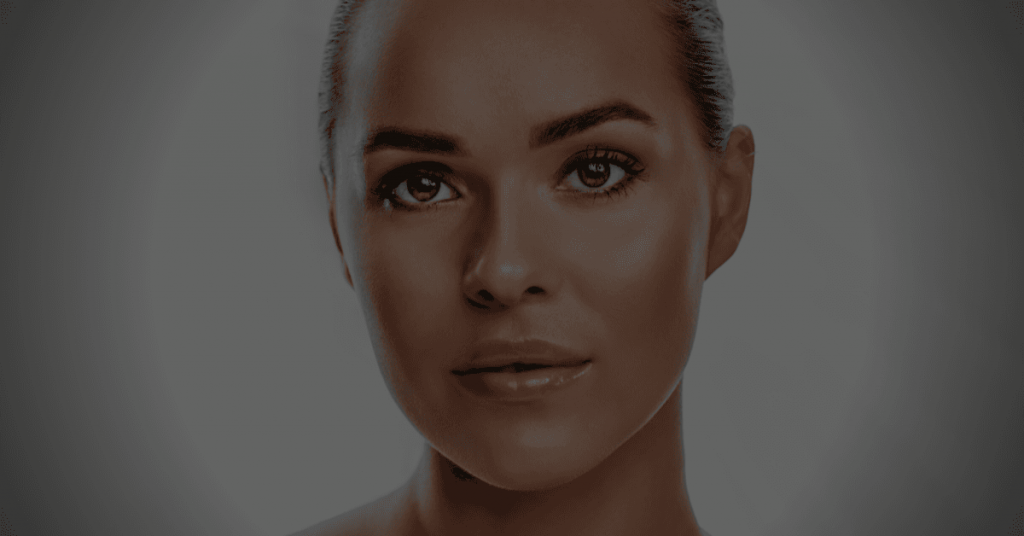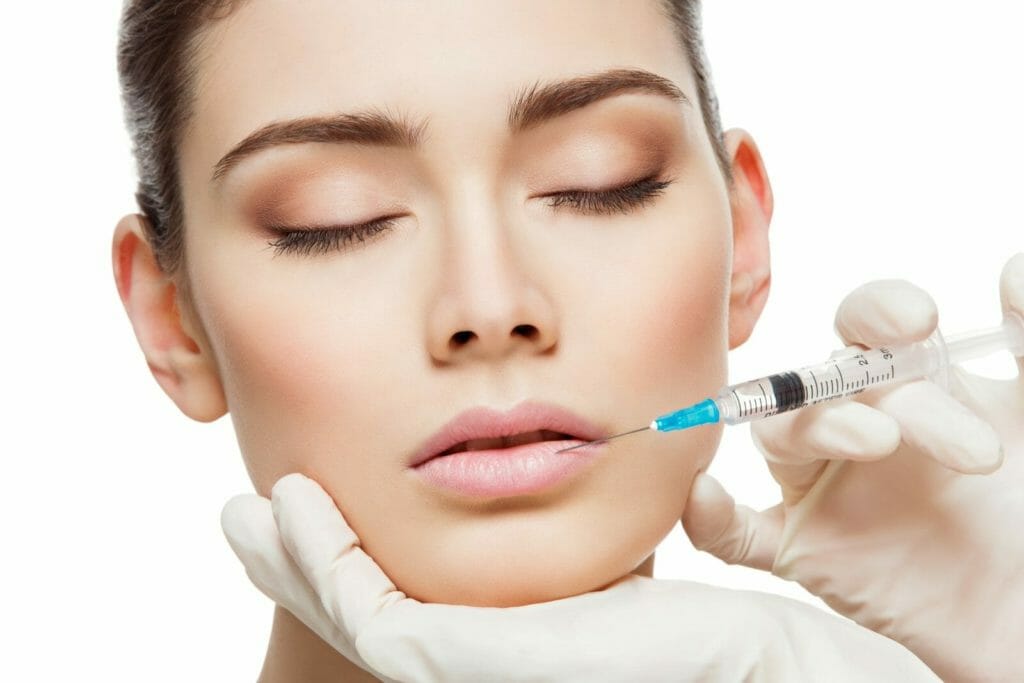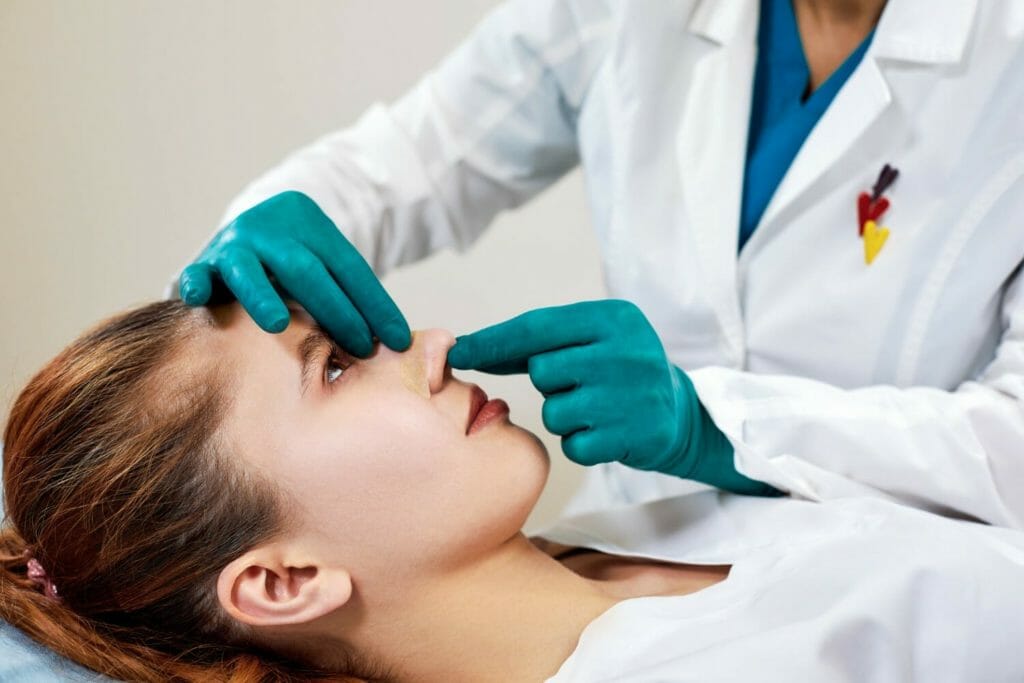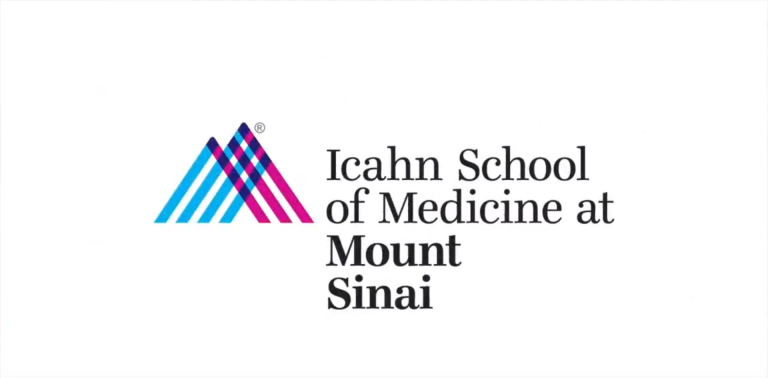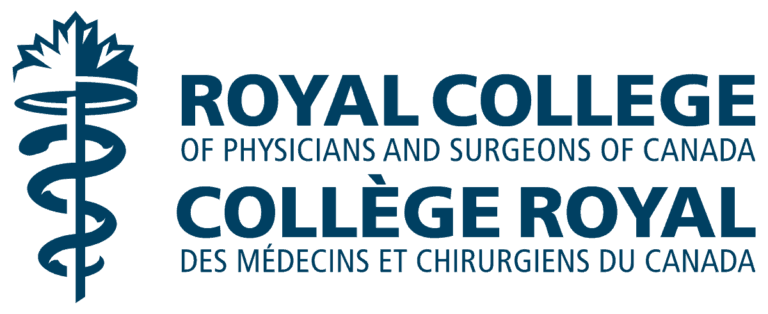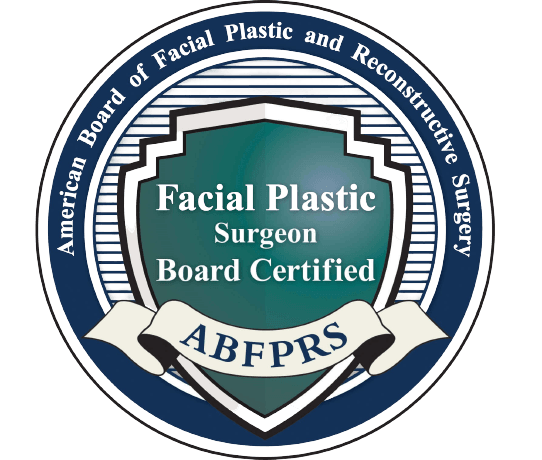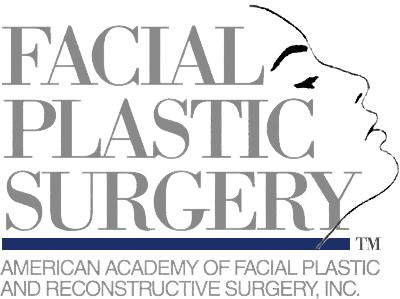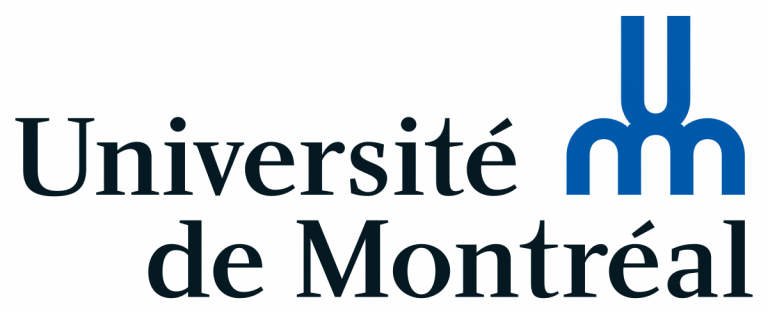Clinique Face MD
Morpheus8 Montreal - Radiofrequency microneedling in Montreal
Morpheus8 radiofrequency microneedling in Montreal
Has your skin lost the tone, texture, or tightness it once had? Do you have loose skin or enlarged pores that have always bothered you? Or maybe you’re looking for an anti-aging treatment that stimulates your collagen production and the growth of new skin cells to tone and tightens your skin.
Fortunately, skin rejuvenation technology has progressed at a very rapid pace. The latest development is Morpheus8 Radio-Frequency Microneedling. The RF device delivers highly targeted radiofrequency energy via tiny needles directly to each layer of the skin. Unlike other technologies, RF energy not only provides deep skin tightening but also surface rejuvenation with amazing results.
Choose a fast microneedling procedure with minimal pain and downtime
Morpheus8 provides improved skin tightening, skin rejuvenation, reduced pore size, and smoothing fine lines, wrinkles, and scarring.
Clinique Face MD
What is Morpheus8 radiofrequency microneedling?
Morpheus8 radio-frequency skin needling combines radio-frequency and micro-needling into an advanced tightening and resurfacing device. This combination therapy is used to address superficial tissue and deep tissue skin concerns.
The anti-aging process involves targeting superficial and deeper tissue, reorganizing the skin’s building blocks with minimal damage and creating a uniform look.
Get radiant and healthy skin with Morpheus8 treatments in Montreal
Clinique Face MD
How does Morpheus8 work?
The Morpheus microneedling device delivers radio-frequency energy via tiny puncture wounds by 24 micro-needles and can achieve a deep remodeling of the skin.
The application of radiofrequency energy creates micro lesions that trigger the new collagen production and strengthen the fibro septal network. The result is smooth, firm, and younger-looking skin and other cosmetic improvements.
Morpheus8 delivers the deepest fractional treatments available, penetrating the subdermal tissue up to 8mm.
The number of microneedling treatments needed depends on the individual patient and intensity may vary from 1-5 sessions. Treatments are typically repeated every 3-6 weeks for optimal results.
Clinique Face MD
Which Areas Can Be Treated?
The Morpheus 8 can be used on almost any part of the body. Some of the most common areas include:
Face – Lift the jowls, correct fine lines, and wrinkles, & smooth acne scarring;
Neck – Tighten sagging skin;
Chest – Tighten loose skin on the chest and cleavage;
Abdomen – Ideal for after pregnancy and weight loss;
Upper arms;
Above the knees;
What are the benefits of Morpheus8 RF microneedling?
Radiofrequency treatments address several skin concerns and are ideal for those with:
- Sagging face & neck skin;
- Loose body skin – due to post-pregnancy, weight loss, or natural aging;
- Deep lines and creases;
- Sun-damaged or poor skin texture;
- Enlarged pores;
- Stretch marks;
- Active acne and acne scars;
- Deep lines and creases;
- Skin laxity (such as sagging jowls);
- Irregular skin tone & texture;
- Vertical lines on chest;
Clinique Face MD
Who is a good fit for Morpheus8 treatments?
Morpheus8 treatments can help reduce wrinkles and fine lines, as well as improve uneven textures, smoothen out sagging skin, and minimize the effects of sunlight. This combination of microneedling and radiofrequency energy effectively tightens loose skin and provides an overall figure contouring. In many cases, Morpheus8 treatments are used in conjunction with other cosmetic procedures for best results.
Who should NOT get Morpheus8 treatments?
RF treatments are great for most people and any skin type. However, RF energy treatments should not be used with people:
- Who are pregnant or breastfeeding
- Have used isotretinoin (Accutane®) within 6 months before treatment
- Have active skin disease in the treated area
- Have a bleeding disorder or any anticoagulant use in the last 7 days
- Have skin resurfacing or surgery to the area in the last 3 months
- Have a pacemaker or any electrical implant in the body
- Have permanent implant in the treated area (such as titanium plates/screws, silicone implants, dental implants)
- Have had Botox or Dysport in the last 7 days, hyaluronic acid, or other filler in the last 6 months in the treated area (except injected performed in a deep periosteal plane)
- Have or have had skin cancer in the treated area
- Have severe concurrent conditions (such as heart disorders, epilepsy, uncontrolled hypertension, liver/kidney disease)
- Have immune suppression
- Have poorly controlled diabetes or thyroid problems
- Have an allergy to anesthesia.
How fast will I see results?
It may take up to a week before you see any noticeable results, however, the positive effects of the changes can be seen for several months.
What to do following the skin treatment?
With Morpheus8, the non-invasive and non-surgical procedure carries minimal risk and downtime; patients can usually return to their regular activities within 24 to 48 hours, but we suggest that you use sunscreen for seven days to protect your skin from direct sun exposure.
How to prepare for a Morpheus8radiofrequency microneedling treatment?
Before undertaking RF Microneedling, follow these directions:
- Discontinue any irritant or topical agents for 2-3 days before treatment
- If medically permitted, anticoagulants should be stopped 7 days before treatment.
- If you are prone to cold sores, your doctor will prescribe you prophylactic medication to prevent reactivation.
- A small test spot will be performed in a non-conspicuous area of the treatment site, before the first complete session.
What is the recovery time from Morpheus8 radiofrequency microneedling?
In some patients, the skin will be red and flushed for 24-72 hours. Generally, after 3 days the skin will return to a near-normal appearance, but mild swelling can persist for 1-3 weeks, depending on treatment parameters.
Directly after treatment, the area of the skin is cooled for 15 min, and petroleum jelly is applied. Wait 24 hours before using a gentle soap. During the first three days, avoid makeup, use moisturizer, and do not pick at the tiny scabs that appear. Crusting from the ablated dots will exfoliate naturally after 1-3 weeks. Avoid direct sun exposure should be avoided for a month.
For Asian patients and skin types IV and V, a prescription or compounded bleaching regimen may be prescribed by the physician for 6-12 weeks, 2-3 times a week following the healing of the treatment area (typically 7 days) to minimize the risk of post-inflammatory hyper-pigmentation. It should be stopped 48-72 hours before another Morpheus8 session.
Clinique Face MD
What are the risks associated with Morpheus8 radiofrequency microneedling?
If administered by trained professionals RF microneedling is very safe with minimal risks. However, after treatment, some patients may experience:
- Discomfort or pain
- Excessive skin redness (erythema) and/or swelling (edema)
- Damage to natural skin texture (crust, blister, and burn), change of pigmentation (hyper- and hypo-pigmentation)
- Scarring
During your initial consultation, our highly trained medical technician will review any relevant information to ensure that RF microneedling is an appropriate treatment protocol for you.Contact Clinique Face MD today and book your consultation and restore your youthful appearance with radiofrequency technology.
Morpheus8 before and after
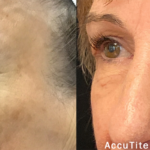
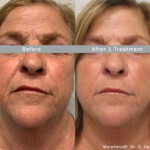
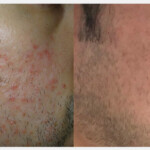
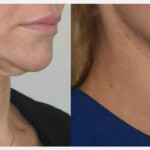
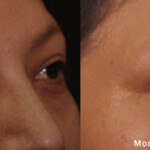
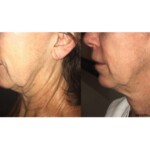
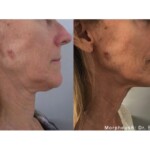
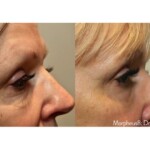
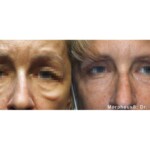
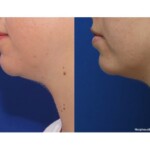
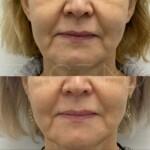
Warning: These photos are published as an indication to provide information on the nature of the intervention. They do not constitute a guarantee of results.
Source: Clinique Face MD.
Learn more about morpheus8 facial rejuvenation
How does Morpheus8 work?
As we age, our skin tends to become less plump, firm and smooth, leading to the appearance of wrinkles, hyperpigmentation and creases. These signs of aging usually appear most prominently on the face and neck, as well as on the chest, elbows and knees and around the abdomen near the belly button.
Morpheus8 introduces a novel technique of radio waves, needling, and sectional handling meant to address all kinds of skincare problems. Penetrating the needles deeply into the dermal layer enables advanced absorption of the radio frequencies, causing thicker warming up of the tissues.
By activating synthesis of collagen and elastin, the body develops healthy new cells which supersede those damaged because of maturing. Procedures may also assist in lowering scarring and bettering texture for beautiful, sound skin without surgery.
Your comfort will be maintained during your treatment with the help of a topical anesthetic which numbs the feeling of microneedles and radiofrequency penetration in your dermis; so don’t worry.
What is microneedling?
Collagen Induction Therapy, or microneedling, is an FDA-approved treatment involving tiny needles inserted into the skin to stimulate collagen production and improve blood flow, thus assisting in healing damages like acne scars, wrinkles, hyperpigmentation and other skin issues.
What is a fractional skin treatment?
Fractional skin treatment uses a fractional laser to precisely target epidermal tissue, allowing it to penetrate just one micron below the dermal surface. This stimulates the production of new collagen and elastin fibers and can help reduce the appearance of wrinkles and fine lines. In addition, Fractional radiofrequency energy can restore overall tone and smooth out uneven skin textures for a more youthful appearance.
What is the benefit of radio frequency energy (RF Energy)?
Radio Frequency energy employs radio waves to heat the deeper layers of your skin, thereby increasing collagen stiffness in the top layers of your dermis. This can result in an improved texture and complexion of the face.
Where can Morpheus8 be used on the body?
Morpheus8 is an efficient therapy for almost all regions of your body that can gain from sub-dermal rejuvenation. It has especially positive effects on oily skin, creases, delicate lines and tissue that is drooping. This remedy is also extraordinary for treating skin conditions like rosacea, UV harm and overproduction of melanin. On top of these advantages, Morpheus 8 can lessen cellulite, improve circulation, boost collagen production and activate fresh cell increase.
When can I put make-up on after the procedure?
Patients can put on makeup right after their laser treatment as long as it does not cause any discomfort. They may experience minor blisters (micro lesions) for a couple of weeks, but these are typically gone within four weeks.
Are there potential risks to a Morpheus8 procedure?
The possibility of complications is part of all medical treatments, including Morpheus8. However, Dr. Moubayed and the team of experts at Clinique Face MD have performed these procedures with great success over the years; in cases of any potential issues, our team of dedicated surgeons will swiftly address them.
Morpheus8 micro needling side effects documented in some rare patients:
- The microneedling procedure may cause redness in the face or neck which usually goes away in a few hours, but could persist for up to two days.
- Following the procedure, you may experience some redness and swelling that will typically subside within 48 hours. Generally, patients report that their discoloration fades away within 7 days.
- After a Morpheus8 treatment, it is normal to experience slight bruising which is often imperceptible, however, visible bruising can sometimes occur.
How long does Morpheus8 last?
The length of time that the effects of Morpheus8, a skin rejuvenation treatment, lasts can vary based on several factors such as skin type, age, lifestyle, and aftercare. However, on average, the effects of Morpheus8 can last anywhere from 3 to 6 months. It is recommended to have follow-up treatments to maintain the results.
Morpheus8 Montreal with Dr. Moubayed
In order to ensure the best outcomes, work with a renowned team of facial surgeons like Dr. Moubayed and explore Morpheus8 treatments in Montreal through a complimentary initial consultation!
We Are Committed To Helping You Achieve Your Desired Look. Trust Your Face To Face MD.
Facial features are what makes each of us unique, and enhancing the appearance of facial features can have a significant effect on self-esteem. Over the counter facial products and makeup provide temporary results, but our procedures offer more durable and dramatic results. Our goal is to identify each patients’ facial aesthetic potential and optimize it.
Clinique Face MD is an aesthetic medical center that specializes in cosmetic enhancement procedures for the face and neck. With our offering of injections, surgery, and state-of-the-art technologies, we are the only clinic in Quebec that provides such a complete service offering dedicated exclusively to aesthetic enhancement of the face and neck.
Our team of facial specialists – overseen by the highly decorated head and neck specialist Dr. Sami Moubayed – are able to improve facial features and help you maximize your aesthetic potential.
We use safe and effective treatment methods using the latest technology – with results that will not only enhance your appearance – but make you feel proud and confident with how you look.
For long lasting, safe and evidence based facial enhancement procedures, go with a name that many other Canadians trust. Trust your face to Face MD!



